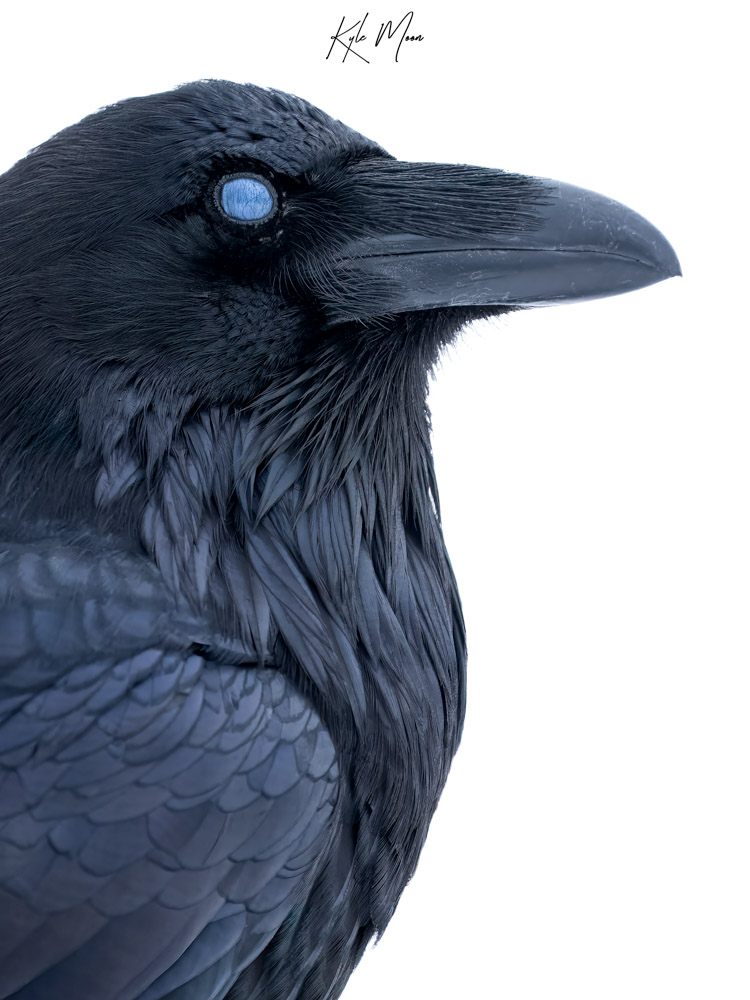More Than Meets the Eye: Ravens & Wolves

Photo courtesy of Kyle Moon
Only a few lucky visitors to Yellowstone may witness wolves hunting, taking down, or feeding on an elk or bison. If you are one of these fortunate few, you can almost always see a sleek, black bird known as the common raven as the first scavenger wandering around a wolf-killed carcass.
Common ravens are incredibly clever and flexible birds. They are known for their resourcefulness, taking advantage of wolf-killed carrion as a readily available food source. Studies conducted inside Yellowstone National Park on the relationship between the common raven and the gray wolf documented more than 135 individual ravens at a single kill site at once! In one instance of a wolf predating, a raven even landed on the prey animal as it was dying and stayed while a wolf began to feed. (Stahler, et al., 2002).

A young wolf from the Wapiti Lake pack pauses on the road to wait for its sibling. Photo courtesy of Rob Harwood
Not only do they quickly recognize the opportunities presented by wolf kills, but even wolves themselves. In the study referenced above, ravens were present in wolf activity away from a known carcass. Wolves traveling, resting, and hunting away from a carcass all attracted ravens more than coyotes engaged in these same activities. (Stahler, et al., 2002)

Photo courtesy of Kyle Moon

Photo courtesy of Evan Watts
Ravens are not only brilliant birds but also remarkably vocal. Researchers have proposed that wolves sometimes follow a raven’s excited calls when discovering a carcass. According to Bernd Heinrich, author of Mind of the Raven, ravens are more wary than wolves when collectively feeding on a carcass. Their calls may warn the wolves of unwanted visitors approaching the site. While ravens can pluck out the eyes and other exposed flesh of a dead prey animal, they lack the tools to open the hide to access the majority of the meat. Having the vocal skills to alert wolves to a fresh food source provide the raven with the wolves’ highly specialized canine teeth which can easily tear through animal hide to expose the reward inside. Perhaps as a thank you from the ravens to the wolves for the gift of “sharing,” ravens have frequently been observed entertaining wolf pups with sticks, bits of hide, and other materials in what can only be described as play, such as tug-of-war or tag! Anyone who has watched a pup-sitting wolf attempt to entertain up to 18 puppies (Junction Butte wolf pack – Yellowstone 2020) alone can appreciate the assistance this provides to that adult wolf.
The relationship between wolves and ravens in scavenging patterns is a captivating example of mutualism in the natural world. Both species benefit from their interaction, and this ‘symbiotic relationship’ is a striking demonstration of the delicate balance of cooperation and opportunism in the animal world. It’s a testament to the intricate and often surprising ways in which different species can interact and depend on each other in the wild.
Content courtesy Yellowstone Wild Guide Leysa K.
Photos courtesy of Yellowstone Wild Guides Kyle Moon, Rob Harwood, & Evan Watts

To learn more about Leysa, and the entire Yellowstone Wild Naturalist Guide staff, visit our “About Us” page!
